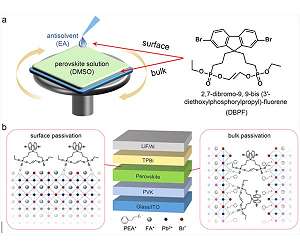Redwire Corporation (NYSE: RDW), a leader in space infrastructure for the next generation space economy, is supplying solar array technology that will power the newest of PlanetiQ’s weather and climate monitoring satellites, GNOMES-3, which is aboard the Transporter 4 launch scheduled to lift off on April 1, 2022 from Cape Canaveral Space Force Station in Florida.
GNOMES-3, the third satellite in the GNSS Navigation and Occultation Measurement Satellite series, is designed to collect more than 2,500 radio occultation measurements of Earth’s atmosphere each day. Redwire solar arrays also powered the previous satellite in the series, GNOMES-2, which launched in 2021.
GNOMES-3 is part of a 20-satellite constellation that commercial weather satellite operator PlanetiQ plans to have operating in low-Earth orbit by 2024. These satellites are intended to collect high-quality weather, climate and space weather data using radio waves from navigation satellites like those in the GPS, GLONASS and Galileo networks.
Data from GNOMES-3 will improve weather forecasting and climate research and allow for closer monitoring of space weather events, such as solar flares and coronal mass ejections, that can seriously affect technology in space and on Earth.
Reliable, durable and effective solar power technology is a key part of operating satellites like GNOMES-3. “The solar arrays Redwire supplied for GNOMES-2 and GNOMES-3 and future radio occultation satellites will lead to improved weather forecasts and climate research,” said Tom Campbell, Executive Vice President of Redwire Deployable Solutions.
“We are excited to be collaborating with PlanetiQ by powering these important missions and improving life on Earth through innovative space technologies.”
The successful launch of GNOMES-3 adds to the growing constellation of weather satellites PlanetiQ is working on. At the same time, work continues toward future GNOMES satellites. Redwire is looking forward to partnering with PlanetiQ on future missions.
The selection of Redwire’s solar arrays for the GNOMES project highlights the company’s expertise in power generation technologies. Redwire solar arrays, both traditional rigid arrays and flexible solutions like the Roll-Out Solar Array (ROSA), are powering a wide array of spacecraft ranging from weather satellites and the International Space Station to deep space probes.
Related Links
Redwire
All About Solar Energy at SolarDaily.com
|
We need your help. The SpaceDaily news network continues to grow but revenues have never been harder to maintain. With the rise of Ad Blockers, and Facebook – our traditional revenue sources via quality network advertising continues to decline. And unlike so many other news sites, we don’t have a paywall – with those annoying usernames and passwords. Our news coverage takes time and effort to publish 365 days a year. If you find our news sites informative and useful then please consider becoming a regular supporter or for now make a one off contribution. |
||
|
SpaceDaily Contributor $5 Billed Once credit card or paypal |
SpaceDaily Monthly Supporter $5 Billed Monthly paypal only |
|

![]()
Inhibiting thermal quenching of high-efficiency quasi-2D perovskite LEDs
Changchun. China (SPX) Mar 29, 2022
Metal halide perovskites are characterized by low-cost, high photoluminescence quantum yield, and high color purity. In recent years, perovskite light-emitting diodes are developing fast, with promising applications in lighting and display fields. However, the ubiquitous thermal-induced fluorescence quenching in perovskite emitters lacks systematic research, and methods to suppress thermal quenching need to be further developed.
In a new paper published in Light Science and Application, a team of … read more
